Jon Bushell tells the story of a hoopoe illustration by Henry Hunt, part of the Royal Society Library's new exhibition ‘Clamorous Wings: Birds in Science’.
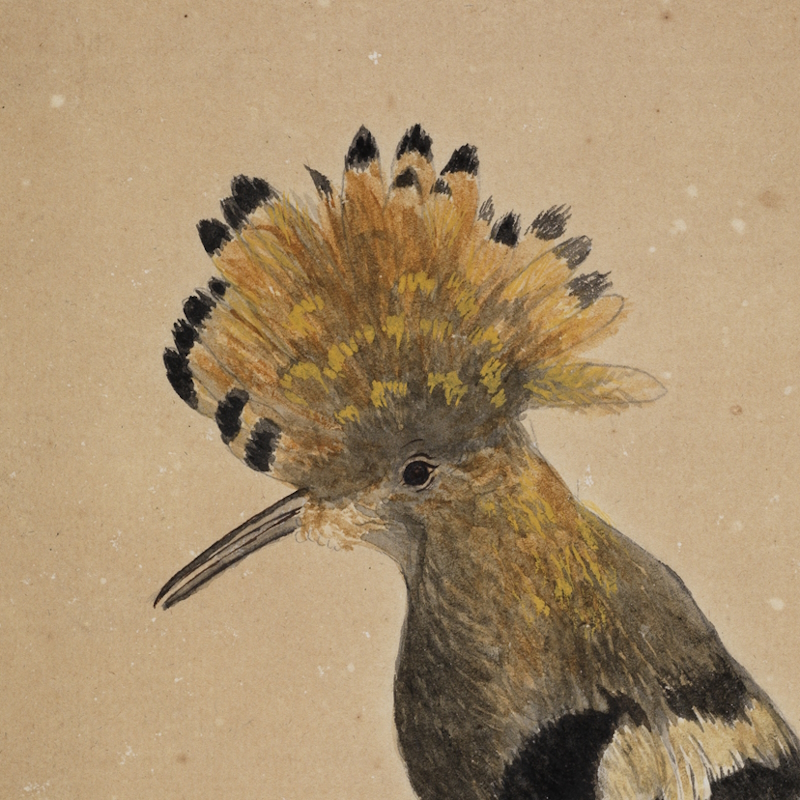
Last week we put the finishing touches to our latest exhibition at the Royal Society, ‘Clamorous Wings: Birds in Science’. It will come as no surprise to learn that the focus is on ornithology.
The exhibition covers a range of scientific activity relating to the study of birds. It begins with collecting efforts in the sixteenth and seventeenth centuries, as well as early attempts to catalogue known species. Moving on to look at later research into the mechanics of flight and the evolution of birds from their dinosaur ancestors, ‘Clamorous Wings’ then concludes with recent studies of bird ecology. There’s also space devoted to the art of bird illustration, including a monograph by John Gould FRS, with illustrations by his wife Elizabeth and the artist Edward Lear.
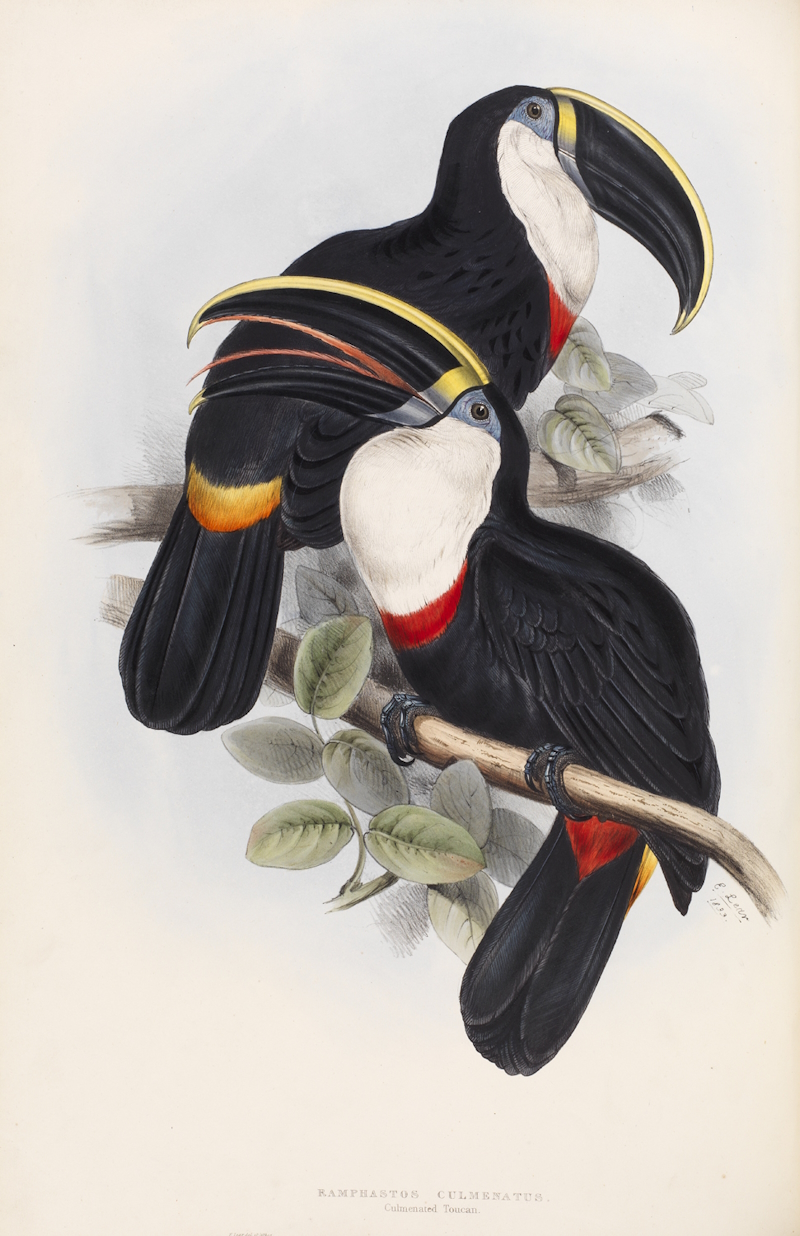 Toucans by Edward Lear, from John Gould’s A monograph of the Ramphastidae (1834)
Toucans by Edward Lear, from John Gould’s A monograph of the Ramphastidae (1834)
One curious item on display is Henry Hunt’s watercolour of a hoopoe. Hunt was employed by the Royal Society in 1676, initially as an operator, though his role later included managing the Society’s Library and Repository (museum) collections. His artistic talents were in demand as well: he often created sketches and watercolours of specimens presented at meetings and contributed many illustrations to articles in the Philosophical Transactions.
Hunt’s drawing of the hoopoe is titled with its Latin name Upupa and is most likely a Eurasian hoopoe, a bird found throughout much of Europe, Asia and North Africa. They predominantly feed on insects, using their long beaks to probe the ground in search of prey. The species is not native to Britain but is sometimes spotted in southern England during the spring migration period – the RSPB estimates that we may get as many as 100 visitors each year.
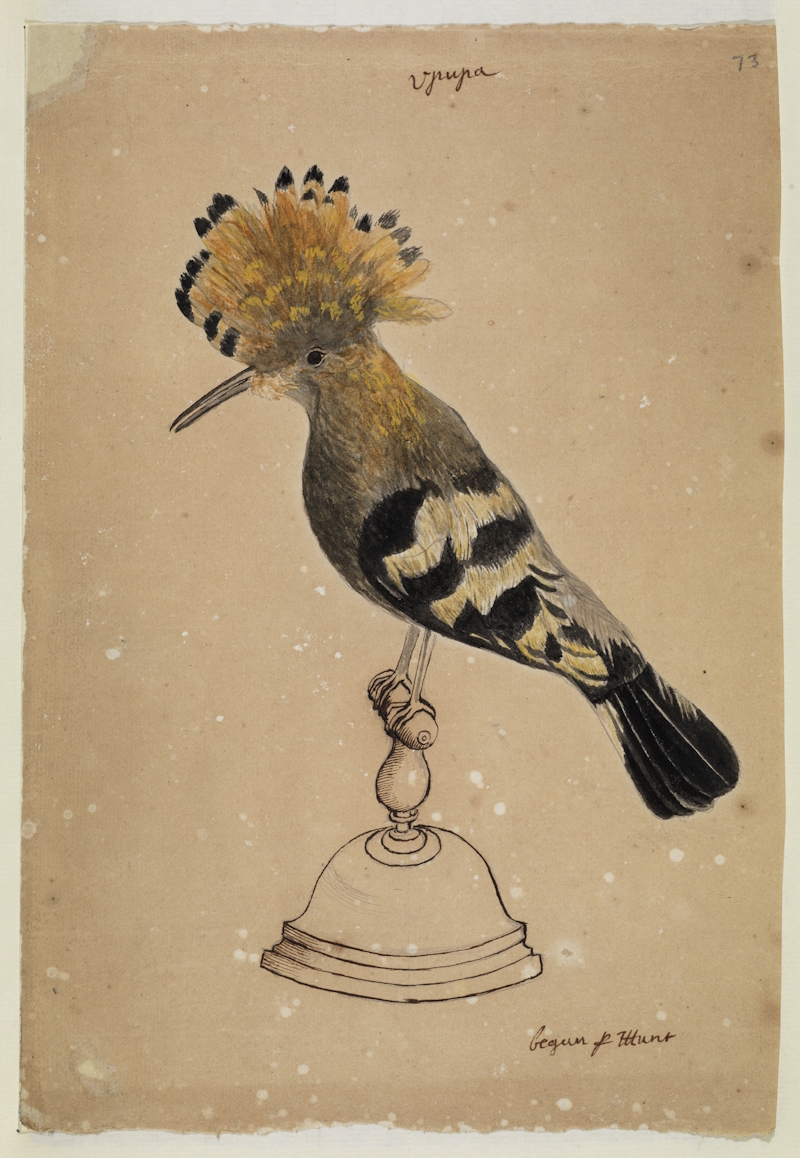 Henry Hunt’s watercolour of a hoopoe (RS.9375)
Henry Hunt’s watercolour of a hoopoe (RS.9375)
Hunt has helpfully signed his piece but hasn’t dated it, so it’s hard to be certain when this artwork was produced, or for what purpose. There are clues elsewhere in the archives which we can look to, however. Most interestingly, we know that the Royal Society did have a hoopoe specimen in the Repository at this time.
Frederick Slare was a physician who was elected to the Fellowship in 1680 and served on Council for several years. On 23 September 1691 he presented a short paper at a Society meeting describing ‘the Upupa found not long since in Surrey near Darking [Dorking]’. Slare also gifted the skin of the bird to the Society at that same meeting, according to the minutes.
In the paper, which is archived as CLP/15i/42, Slare explains that the bird was actually brought to him alive, though in the end it survived only a short time in captivity. He describes the bird’s crest and markings and compares it to the description in Francis Willughby’s Ornithology, concluding that his bird must be a juvenile, as it is rather smaller than the one described by Willughby and its plumage not so distinct. Slare remarks that the black tips on the crest are very clear, but the white stripes beneath them are not yet well defined. This would appear to match Hunt’s drawing, which shows almost no white in the crest.
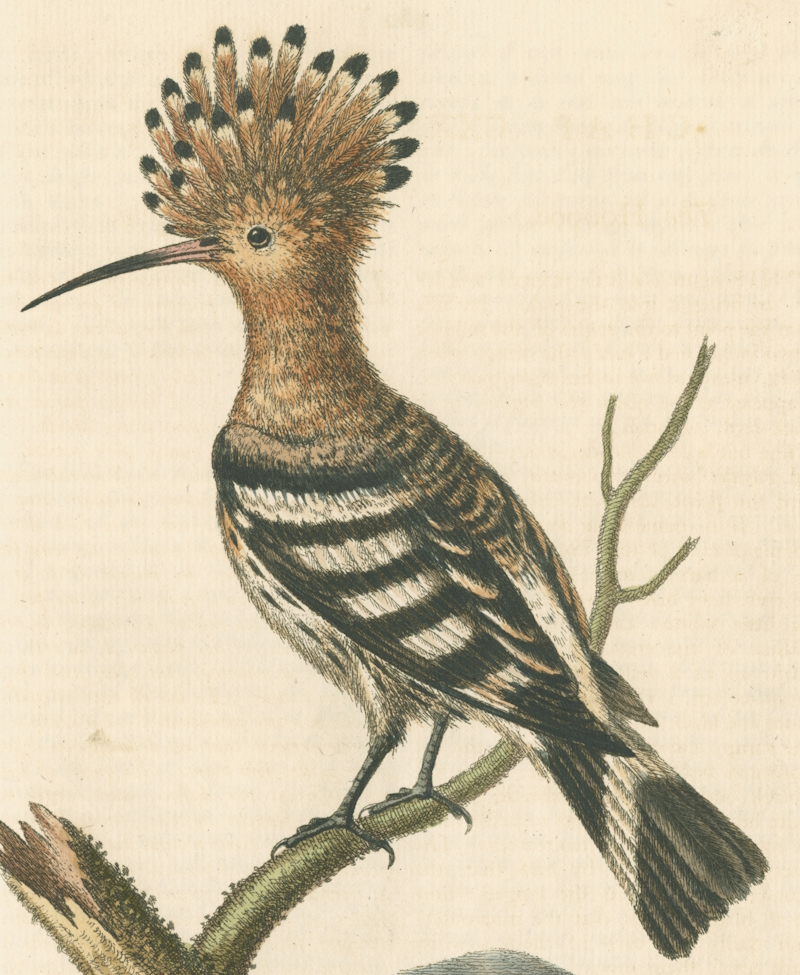 Drawing of an adult hoopoe with defined white streaks in the crest, from Gleanings of natural history volume 3 by George Edwards FRS (1764)
Drawing of an adult hoopoe with defined white streaks in the crest, from Gleanings of natural history volume 3 by George Edwards FRS (1764)
If we accept that Hunt’s drawing does show Slare’s specimen, then there are a couple of explanations for its creation. Several of Slare’s papers were published in the Philosophical Transactions, but his description of the hoopoe was not among them. It’s possible that an article was under consideration at one point, and Hunt prepared his drawing in anticipation. Alternatively, Hunt may have undertaken this as part of his work managing the Repository. He produced numerous sketches and paintings of specimens from the collection during his time at the Society, and the hoopoe must have made a pleasant change from sketching bladder stones and monstrous radishes.
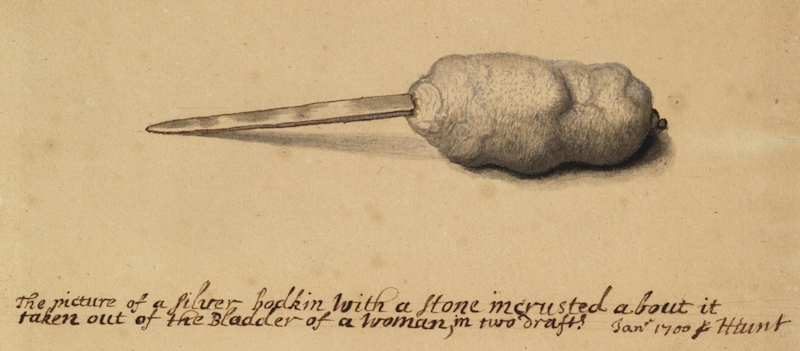 Henry Hunt’s sketch of a silver bodkin encrusted in a bladder stone (MS/131/98-A)
Henry Hunt’s sketch of a silver bodkin encrusted in a bladder stone (MS/131/98-A)
It seems unlikely that Slare’s hoopoe skin has survived to the present day, which prevents us from comparing it directly to Hunt’s drawing. It is listed in a 1735 catalogue of the Repository but is conspicuously absent from the lists produced in the 1760s. It’s hard to imagine that the distinctive hoopoe wouldn’t have been identified during the listing exercise if the specimen were still intact. That said, these later lists do not always provide the most detailed descriptions: ‘Head of an unknown bird’ is something of a low point, and a reflection on the poor condition of the Repository by this time.
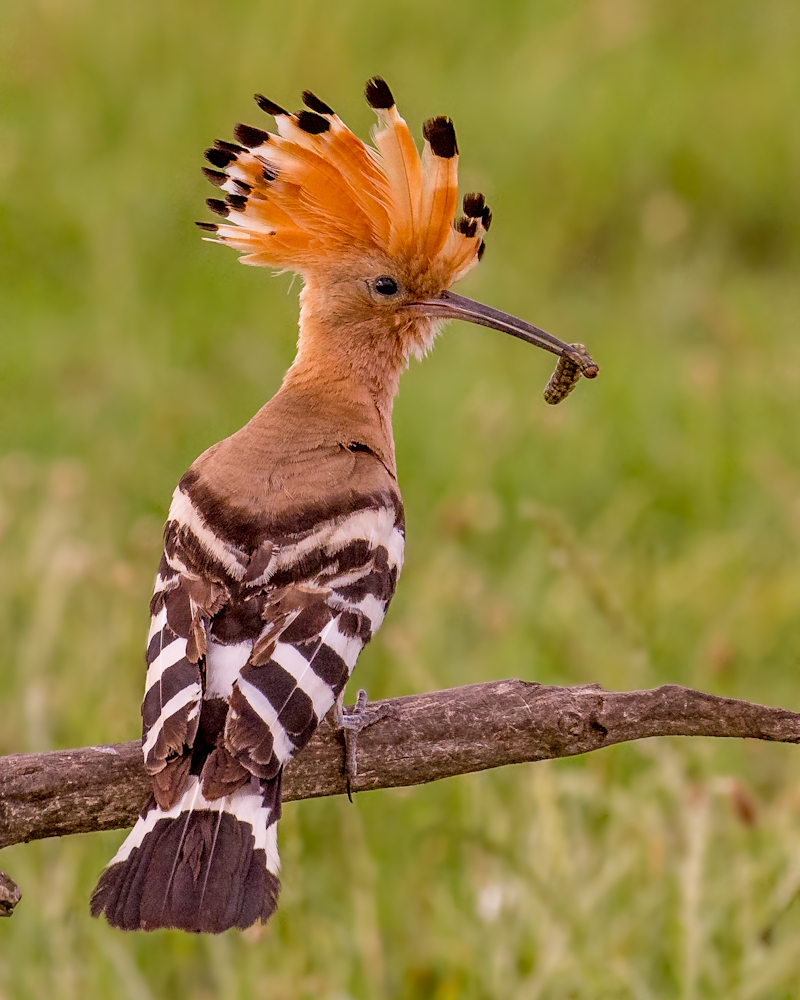 A hoopoe in Hungary, by Andy Morffew
A hoopoe in Hungary, by Andy Morffew
If you want to take a closer look at Hunt’s hoopoe illustration for yourself, the exhibition is now open until the summer. There are plenty more ornithological wonders on display as well, including a register of swan marks from sixteenth-century Lincolnshire, a penguin egg from Antarctica, a camouflaged bird viewer from Nikolaas Tinbergen FRS, and much more. Just drop us a line at library@royalsociety.org if you’d like to arrange a flying visit.

